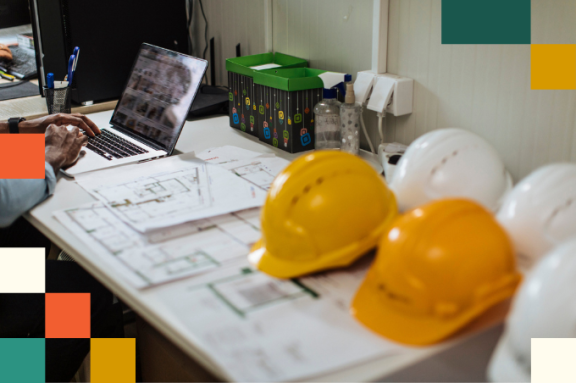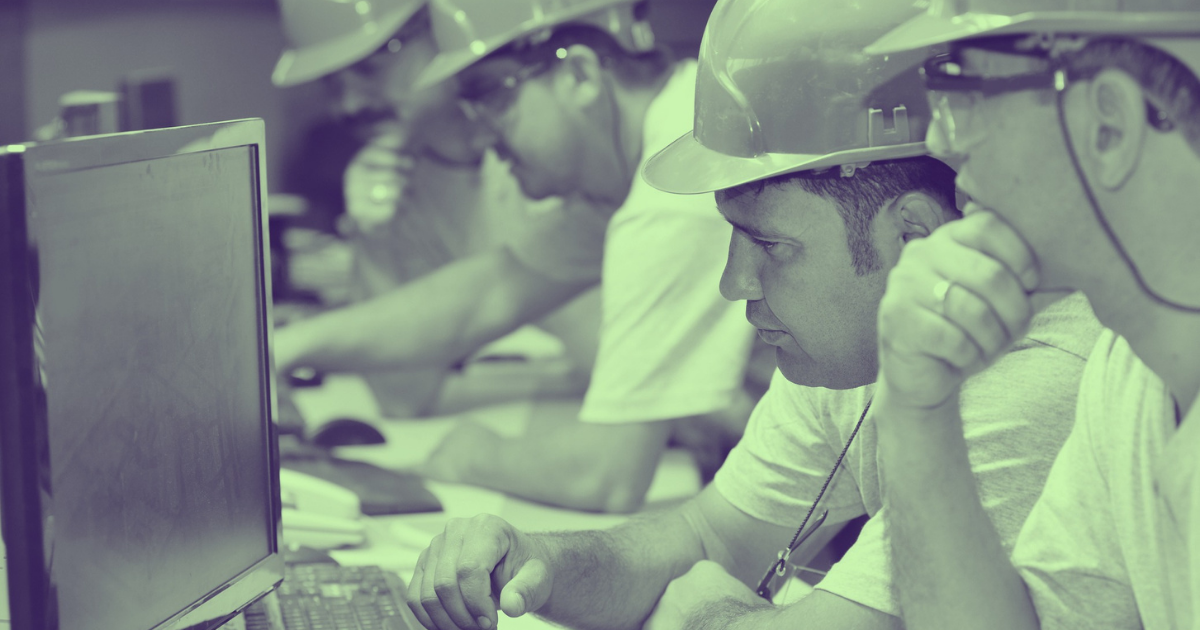
Alongside client satisfaction, profitability, and employees’ satisfaction, safety management factors into a project’s success. A project manager is responsible for ensuring that contractors and other worksite employees follow safety standards and practices.
Other responsibilities include conducting site audits, establishing safety rules, ensuring employees are up-to-date on safety training certifications, and supplying the proper surveys to the appropriate agencies.
Safety management can become a time-intensive, document-heavy part of construction project management. Fortunately, various software programs, standards, and agencies are available to help safety leaders keep track of occupational safety documentation and codes.
What is Safety Management?
Safety management is part of a company’s broader environment, health, and safety (EHS) system. It refers to the company’s processes, framework, and measures that help prevent workplace injuries, accidents, and fatalities.
Employees utilize these protocols to identify and manage risks on-site. This systematic approach includes the type of software used by employees, the processes and documents used to identify risks, and the training programs taught to mitigate employee harm.
The Importance of Safety Management
The National Safety Council states that an organization’s safety management program should be designed to reduce workplace incident risks, injuries, and deaths. A safer work environment is achieved through data-focused improvements and assessments.
The responsibility of creating a safer workspace and culture should be shared by various organization departments, from managers to specialty contractors. An efficient safety management program helps your team meet critical goals throughout the project’s duration.
These goals encompass other priorities besides profitability.
Ensure public safety
Save time and money
Establish operations, protocols for future projects
Meet health and safety standards to avoid violations
Key Components of Safety Management
Occupational safety falls into five key areas.
Corporate safety leadership
Safety management is not the contractor or project manager’s sole responsibility. A safety-oriented culture enlists all employees and employers regardless of position.
Risk management
This formal process is designed to determine workplace hazards and evaluate and analyze the risks that accompany these hazards. The next step is removing these hazards or mitigating risks or outcomes to minimize employee harm.
Safety training
Workers must be trained in various processes, operations, and procedures. Training sessions should be held regularly so that all employees are adequately informed about health risks, emergency preparedness protocols, and other hazard communications.
Operational control
In a safety management program, operational control, also known as operational control and planning, refers to how a company identifies the processes needed to be performed to not only achieve efficiency but mitigate risks.
The proceeding includes “checking any faults and [fixing] these with corrective actions so that nonconformities are minimized,” according to OHSAS (occupational health and safety standard), the global equivalent of America’s Occupational Safety and Health Administration (OSHA). In construction, risks are identified through risk assessments and worksite audits.
Effective response
A safety management program like Quickbase can make an Emergency Preparedness plan available to employees at all times, and features like emergency notifications can prevent injury by enabling quick exchange between teams and team members.
How to Make Sure You’re Safety Compliant
Find secure, easy-to-use software like Quickbase that centralizes construction safety management tools and resources to meet safety compliance. When companies implement technological tools on a construction site to meet EHS standards and mitigate risks, it can improve safety outcomes and administrative efficiency.
Harvey Building Product, a window, doors, and building products manufacturer, reduced safety incidents and lost time in their organization by 31% and 70%, respectively, when they adopted Quickbase.
The following are concrete steps to help ensure workplace processes satisfy safety compliance.
1. Conduct a construction risk assessment
Before construction begins, risk assessment allows stakeholders to focus on, define, and identify risks that can cause injury, illness, damage, or fatality.
Beyond this, the project manager should hold safety meetings, training, and refresher training for the organization or company.
2. Make OSHA requirements available to all workers
These legal standards remind employees to take proper health precautions. Review construction hazards regularly with contractors.
3. Create a worksite health and safety program
When companies implement this program, it covers common health risks and injury causes on-site.
Clean up spills
Operate machinery
Wear proper equipment
Prevent accidents
4. Routing training and knowledge testing
Enlist employees in OSHA education programs and perform regular surveys for new hazards like toxic chemicals, metals, and noise.
5. Documentation and Reporting
This is where digital safety management programs can streamline your company processes. Quickbase provides numerous benefits to an organization such as seamless operation by integrating project management and team communication with health and safety compliance documentation.
Common Causes of Workplace Accidents and Solutions
There are the “Fatal Four” elements that lead to serious harm or death in construction: Falls, being struck by an object, electrocution, and getting trapped between something.
These categories accounted for 60% of construction worker deaths in 2017.
It’s no surprise that the construction industry has a higher fatal injury rate than other industries across the US, according to OSHA.
Work location
Falls are the leading cause of construction workplace harm/fatality.
Falls from height
Properly install scaffolding, rail systems, and safety nets
Ensure that the proper ladder is used for the type of job in question
Ensure that the ladder is functional with no visible or structural damage
Avoid overwhelming the ladder’s weight capacity
Clear stairways
Ensure stairway surfaces are dry
Install stairway handrails
Dangerous processes
Construction workers are at a higher risk of workplace incidents, so a focus on protection is important.
Demolition and excavation
Ensure that excavations don’t cripple nearby scaffoldings and other structures
Wear proper equipment
Keep site clean during demolition
Getting trapped or struck by machinery/structures
Ensure employees know how to operate heavy machinery (e.g. cranes) safely
Inspect machinery for damage
Follow machinery’s weight limits
Ensure the area is clear to avoid striking other employees
Ensure that a first-aider is available on-site
Hazardous construction materials
Many construction procedures include handling hazardous building materials classified as corrosives, heavy metals, combustible liquids, toxins, carcinogens, and other harmful substances.
Hot or harmful substances such as cement, asbestos, and liquid chemicals
Wear proper PPE
Provide access to hazard communication protocol for workers (e.g. chemical spill plan)
Electrical discharge
Ensure all power is off before proceeding with electrical circuit work
Move equipment and other materials away from electrical power lines
Replace damaged cords
Hazardous airborne pollutants
Unfortunately, construction workers are at a higher risk of developing respiratory problems like chronic obstructive pulmonary disease (COPD), asthma, and silicosis.
Presence of silica, dust, and other particulate matter
Proper PPE for eyes, face, hands, and head
Human oversight
There are ways to prevent human error and mitigate the effects of these errors.
Unmaintained machinery
Inspect machines or tools for damage
Little to no precautions/safety training
Require safety training for all
FAQs
What do you mean by safety management?
Health and safety management is a company’s set of methods to identify and mitigate risks. These processes, standards, and programs are part of a company’s environment, health, and safety system.
What are the 4 components of a safety management system?
Safety policy
Safety risk management
Safety assurance
Safety promotion
What is the importance of safety management?
A commitment to health helps reduce workplace harm and fatality, among other benefits. Additionally, proper workplace safety management methods save time and money by reducing employee claims and delays and standardizing safety procedures.
What are the 5 elements of safety?
Proper safety gear and tools
Well-maintained, functioning machinery/equipment
Proper training and regulations
Removing hazards
Employing technology to minimize risk




